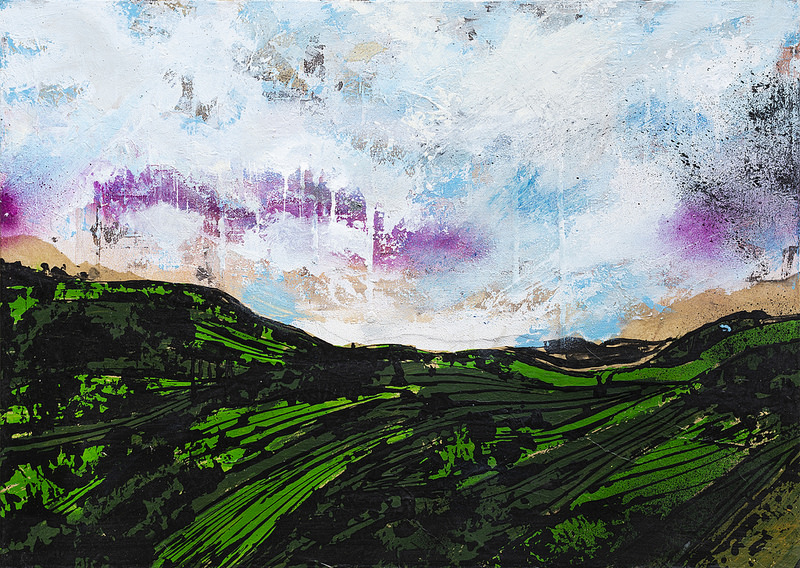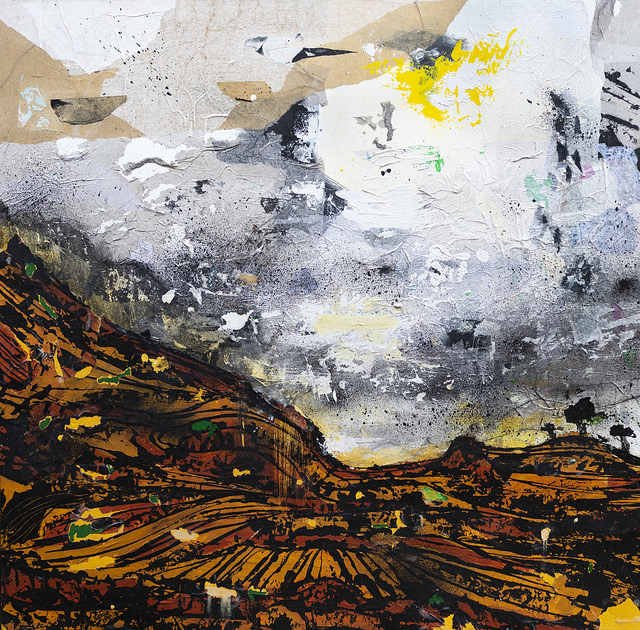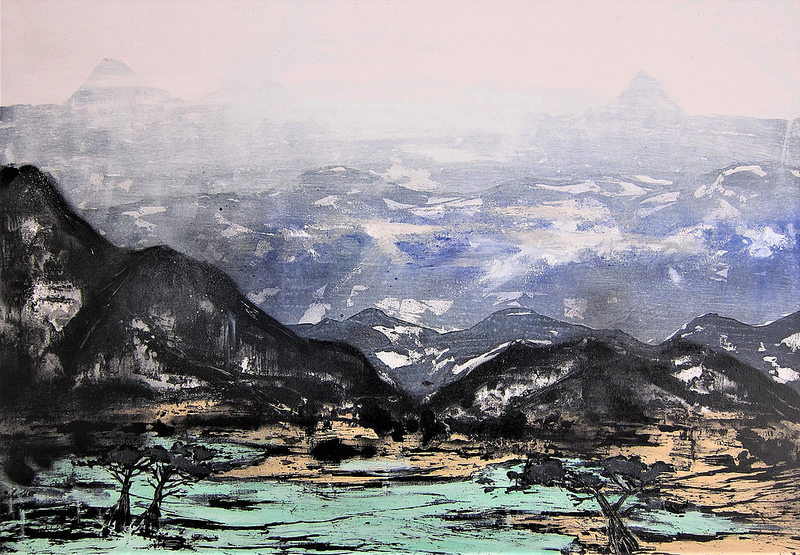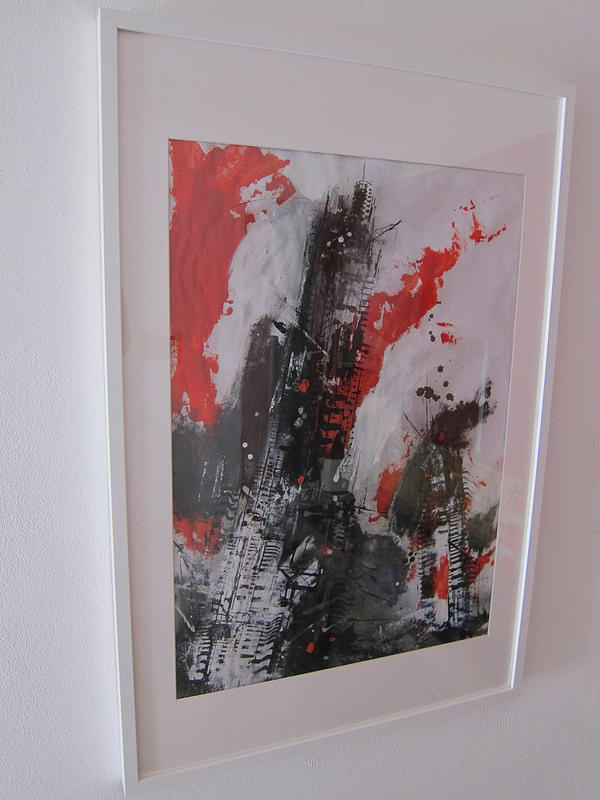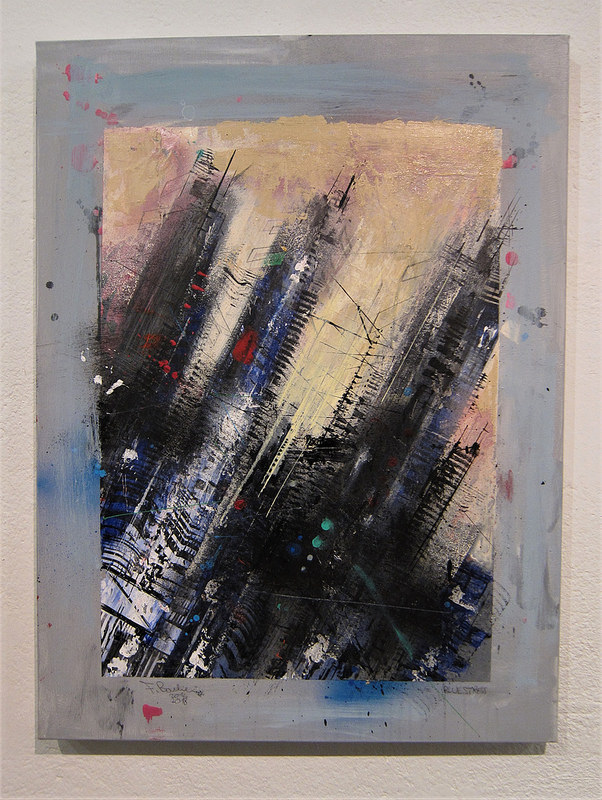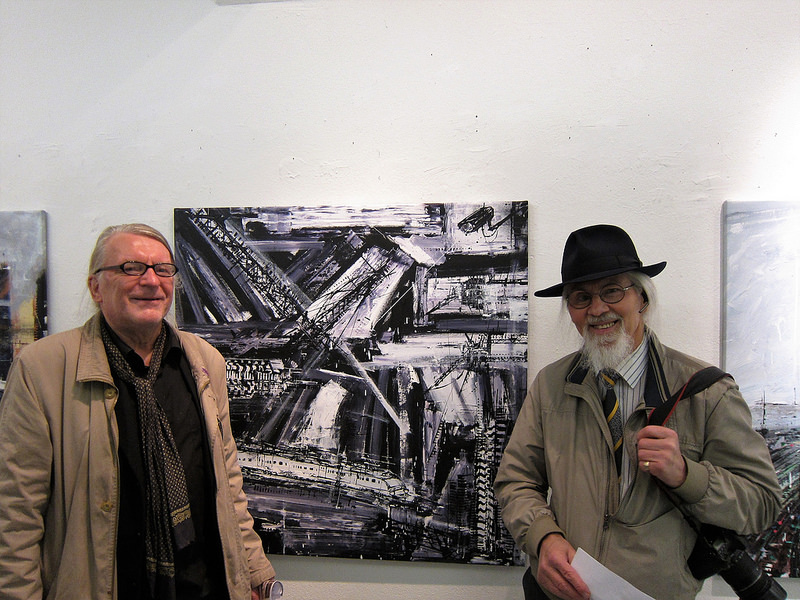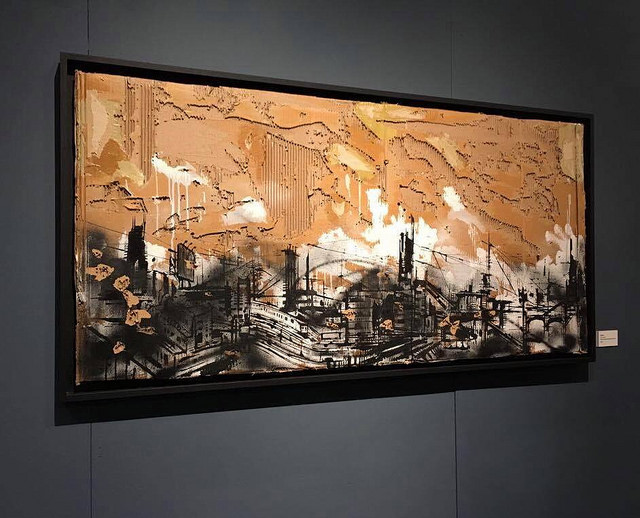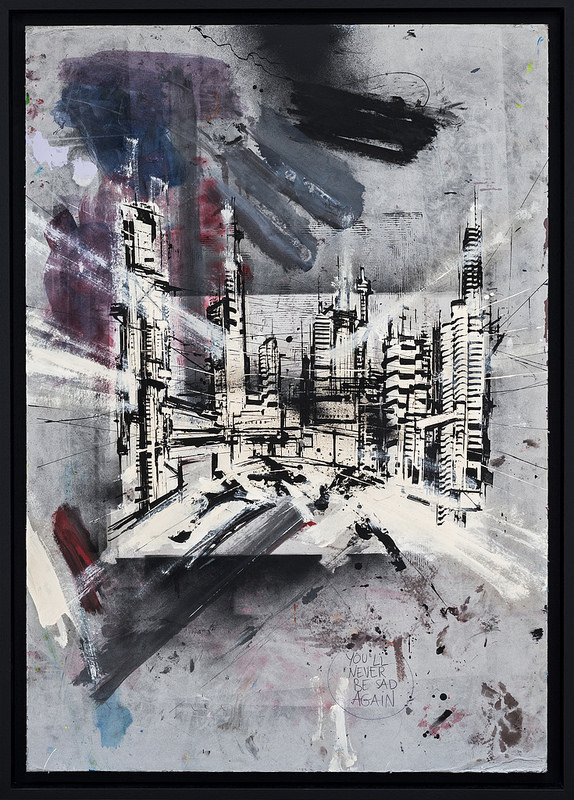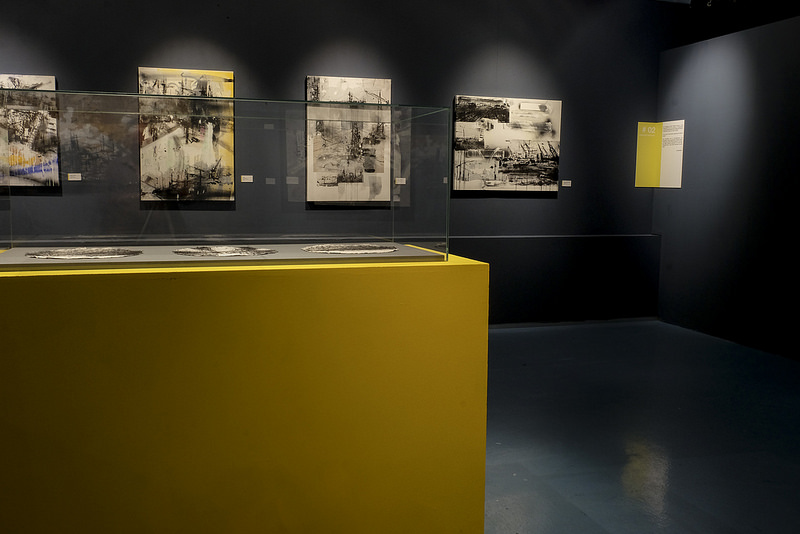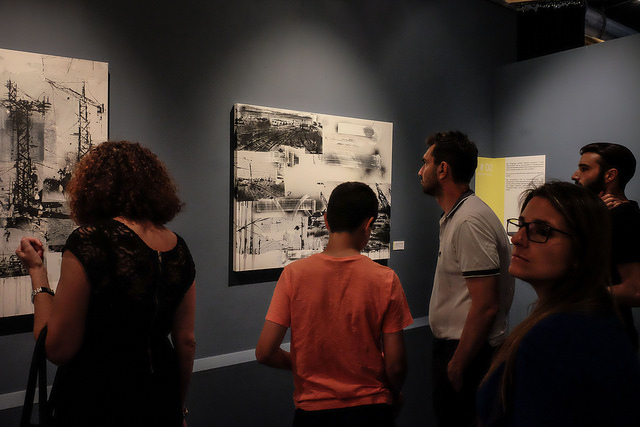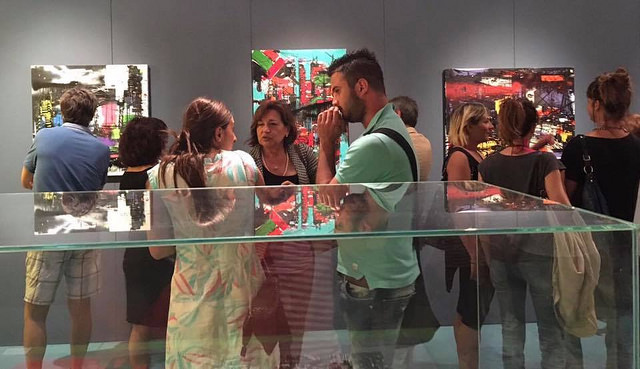
installation view of the two paintings i did for this amazing exhibition

work in progress (Ph Silvia Sagone)

“Iniziazione”, mixed media on canvas, 70×100 cm, 2018.
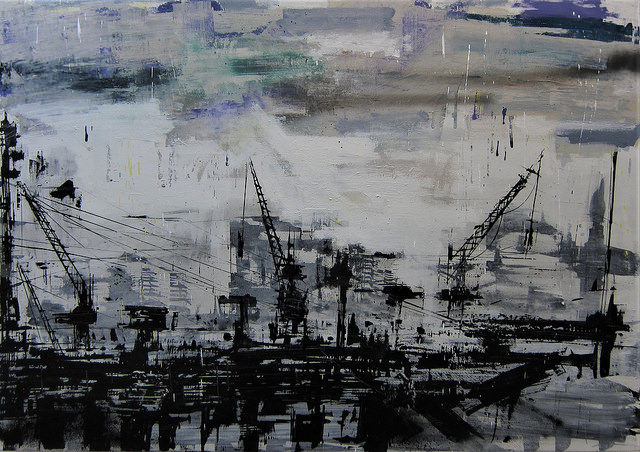
“Società Segreta”, mixed media on canvas, 70×100 cm, 2018.

THE TWILIGHT ZONE. Tales from the edge of town
a cura di Alessandra Ioalè
artisti in mostra: Francesco Barbieri, Daniel Chazme, Andrea Chiesi, ETNIK, Marcantonio Lunardi, Luca Lupi, Fabio Pradarelli, SEPE
Burning Giraffe Art Gallery – Via Eusebio Bava, 8/a, Torino
Vernissage: venerdì 4 maggio, ore 18:30-21:30
Periodo mostra: dal 4 maggio al 2 giugno 2018
Orario di apertura: martedì-sabato, 14:30-19:30 (mattina su appuntamento)
Contatti: www.bugartgallery.com – info@bugartgallery.com – t. 0115832745
Burning Giraffe Art Gallery è lieta di presentare la mostra collettiva The Twilight Zone, a cura di Alessandra Ioalé, che coinvolge gli artisti: Francesco Barbieri, Chazme, Andrea Chiesi, Etnik, Marcantonio Lunardi, Luca Lupi, Fabio Pradarelli, Sepe.
Attraverso una variegata serie di opere pittoriche, fotografiche e scultoree di queste otto personalità artistiche, italiane e straniere, si propone una lettura delle incredibili e originali declinazioni che ha assunto oggi il movimento realista, nell’estetica della rappresentazione e della restituzione emozionale del paesaggio urbano e della vita quotidiana che vi si svolge, rivitalizzando e continuando ciò che è stato cominciato oltre due secoli orsono e sottolineando quanto questo movimento non solo non sia morto, ma abbia riacquistato autonomia come forma espressiva nel panorama artistico contemporaneo.
Negli ultimi vent’anni una nuova ondata di artisti è tornata a rappresentare il paesaggio urbano e la vita quotidiana di chi lo abita, rispondendo a quel dovere di cronaca del contemporaneo con una qualità e varietà di soluzioni originali, inedite, personali ed espressive.
Ognuno proveniente da contesti ed esperienze distinti, scegliendo discipline e modalità espressive diverse, gli otto protagonisti della mostra dimostrano però una spiccata e comune sensibilità verso la narrazione del paesaggio urbano. Chi proveniente dal writing e dal graffitismo urbano, chi dalla videografia artistica e dal documentario di denuncia, chi dal disegno e dalla scena punk underground degli anni Ottanta, chi dalla fotografia e chi, infine, da studi di architettura e pratica della stessa, per ognuno di essi la città è nuovamente il soggetto perfetto per le rispettive ricerche, attraverso il quale riflettere, anche con toni polemici, sulla crisi che negli ultimi venti anni ne ha investito e corrotto la forma e la vita che in essa si conduce.
Dal realismo descrittivo, che tocca per certi aspetti livelli piranesiani, dei paesaggi metropolitani del pittore emiliano Andrea Chiesi, pervasi da un’atmosfera rarefatta, straniante ma attraente, dove il tempo sembra essere sospeso e l’attività umana scomparsa; alla lucida ricerca del fotografo toscano Luca Lupi, che con sguardo puro e nitido si pone frontalmente davanti a determinati paesaggi restituendone lingue sottili – profili spigolosi, per certi aspetti irregolari nelle loro altezze, che sembrano la naturale continuazione o interruzione della linea d’orizzonte, funzionando visivamente come un elettroencefalogramma della città contemporanea –; passando al netto rigore dei volumi e delle strutture compositive delle costruzioni urbane e industriali uniche protagoniste delle opere pittoriche del muralista polacco Chazme e dell’architetto Fabio Pradarelli, che realizzano dei ritratti architettonici in cui il dettaglio descrittivo è ridotto all’essenziale per manifestarne la loro imponenza non sempre con valore positivo; fino a toccare livelli più lirici, molto lontani da una volontà descrittiva, con i ritratti urbani e gli scorci di stazioni ferroviarie e luoghi di periferia di tutto il mondo accennati dalla veloce spatola del post-graffitista italiano Francesco Barbieri, il quale affida al gesto istintivo la restituzione emotiva delle atmosfere. Incontriamo, poi, la ricerca originale tradotta in scultura di un altro muralista italiano, Etnik, con le sue metafore architettoniche, che restituiscono una personale critica all’asfissiante costruzione selvaggia operata oggi nelle nostre città. Se fino a ora la presenza umana è rimasta in disparte, il percorso si conclude con due ricerche che polarizzano l’attenzione su due dei suoi aspetti: la vita quotidiana e il segno lasciato nel paesaggio urbano. Il muralista polacco, Sepe, infatti, è l’unico in questa collettiva a documentare con sguardo critico e ironico scene tipiche del vissuto quotidiano odierno di una società dedita al consumismo, alla santificazione delle apparenze e al perseguimento di falsi valori sociali dettati dai nuovi media di comunicazione di massa. La nostra attenzione è catturata infine dal realismo trasfigurato nelle opere fotografiche del videoartista toscano Marcantonio Lunardi che, attraverso il software Google Earth, sonda in ambito virtuale le zone di frontiera urbana catturando scorci inediti di paesaggio che racchiudono in sé testimonianze della presenza umana, enfatizzate esteticamente sfruttando gli errori del programma nella restituzione 3D, facendole spiccare come pietre preziose incastonate in questi ambienti mostruosamente deformati.
Aree che sembrano ai confini della realtà in cui si produce un ossimoro estetico, attraente e respingente allo stesso tempo, narrato da un folto gruppo di artisti, che contribuiscono alla rinascita del realismo nell’arte, ma soprattutto del genere paesaggistico urbano contemporaneo.

